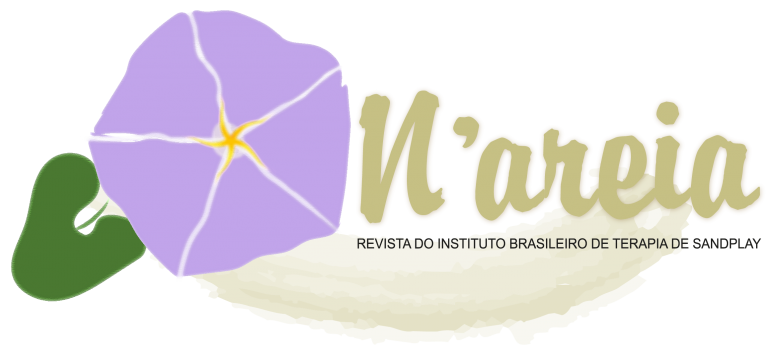Ruth AMMANN
It was certainly not a miniature that attracted me to Sandplay, it was the sand, the body, the building material!
No, it was Dora Kalff herself who seduced me, with a little help of my brother Peter, who in summer 1972 was working on the DVD on Sandplay with Dora Kalff. At that time I had left my profession as an architect and studied at the C. G. Jung Institute Zürich to become a Jungian analyst. In those days Sandplay was not taught at the Jung Institute, the training was on the whole rather intellectual. To be honest, during my training as a Jungian analyst, I missed my hands on work as an architect.
One day Peter Ammann invited me to join the film team, and I entered Kalff’s house by the back door, directly into the cozy Sandplay room. I watched the filming crew and later encountered Dora Kalff. We had a nice conversation and suddenly she asked me with a smile: “Why don’t you come to do a Sandplay process?”
I did it and liked it, because it helped me to use my artistic, sculptural, hands on abilities, that had been part of my life since childhood and of course most of all were well used in my former profession. However, I did it parallel to my Jungian training and my personal analysis.
To my surprise Mrs. Kalff asked me, as soon as I had completed my personal process, to work with her as her assistant, that is to do a kind of internship in her practice. Of course, I liked this idea and worked as a “bloody” novice during three years in the second little Sandplay room in her practice. It was a very good time, I learned so much from Dora Kalff as a supervisor and from my children clients, that I was no more a novice, when later, after the middle exam at the Jung Institute I had to work with adults in my own practice.
At the end of my training at the Jung Institute, I wrote my diploma thesis about a child’s Sandplay process. It was the first thesis at the Jung Institute about a Sandplay therapy and about a child case. It was very successful and since then I teach Sandplay, and consequently the method more and more became part of the Institute’s training program.
Jungian analysts always used dreams, paintings and active imagination as ways of bringing up unconscious material. However, the inclusion of Sandplay in the training course added a new and very special tool to the psychodynamic orientation of Analytical Psychology. Freud called dreams the “Via regia” to the unconscious. With some fantasy, painting and drawing from the unconscious could be called the “Via emotionalis” to the unconscious, and finally I would call Sandplay the “Via corporis” to the unconscious.
With this I want to emphasize that -for me- not the miniatures are the most important part in Sandplay, because miniatures are also part of play therapy and other therapeutic techniques, but the sand and water are essential.
Why? Sand and water make Sandplay unique, because Sand is body, the structures and forms in the sand tell us very much about the client’s physical condition. Therefore, Sandplay is a most precious tool within Analytical Psychology, and even in the field of medicine. From this point of view, Sandplay adds the important component of body, of physical anchoring to Analytical Psychology.
Furthermore, transference and counter transference and resonance are in my view the most effective elements in a therapeutic process. Resonance happens through waves and vibrations, which, however, need a medium in order to propagate: for water waves it is the water, for sound the air, for light the electromagnetic field, for violin the string, for sand play therapy it is primarily the sand that absorbs the subtle vibrations of body sensations and emotions and passes them on to the Sandplayer and the therapist.
These are the aspects I most appreciate and love in Sandplay therapy.
But which are the ones I don’t like, I hate in the field of Sandplay?
It becomes problematic for me when Sandplay is used without the fundamentals of Jungian psychology, when Sandplay -therapy is used without a proper therapeutic training. Of course, Sandplay can be used as a wonderful play- in Switzerland each child has access to a sandbox, be it in the family or public gardens or in kinder gardens and schools. In these sandboxes the children experience joy and creativity; just by digging, forming, working they feel happy and relaxed when they come home to mama. But we don’t call it Sandplay therapy, nobody takes money for watching the children, nobody makes a deal with it.
Indeed, I am very concerned about the rapid dissemination of “Sandplay” in the world without a sufficient knowledge of Jungian psychology or a sufficient knowledge of psychodynamic processes. It degrades this special method to a kind of miniature play, which no doubt can be effective to some extent, but misses the Sandplay’s uniqueness of transforming and maturing holistically the personality by a deep personal dialogue between conscious and unconscious, psychic and physical, emotional and reflecting aspects and integrating the insights gained into life and, most importantly by understanding the sand tray as an therapeutic field between client and therapist, in which all the fine and complicated aspects of classical transference, emotional transference and resonance can develop. The devaluation of this rich, effective and joyful method hurts. I wish for IBTSANDPLAY to continue teaching the well-founded Sandplay training, as I met it the many times I was working in Brazil!
